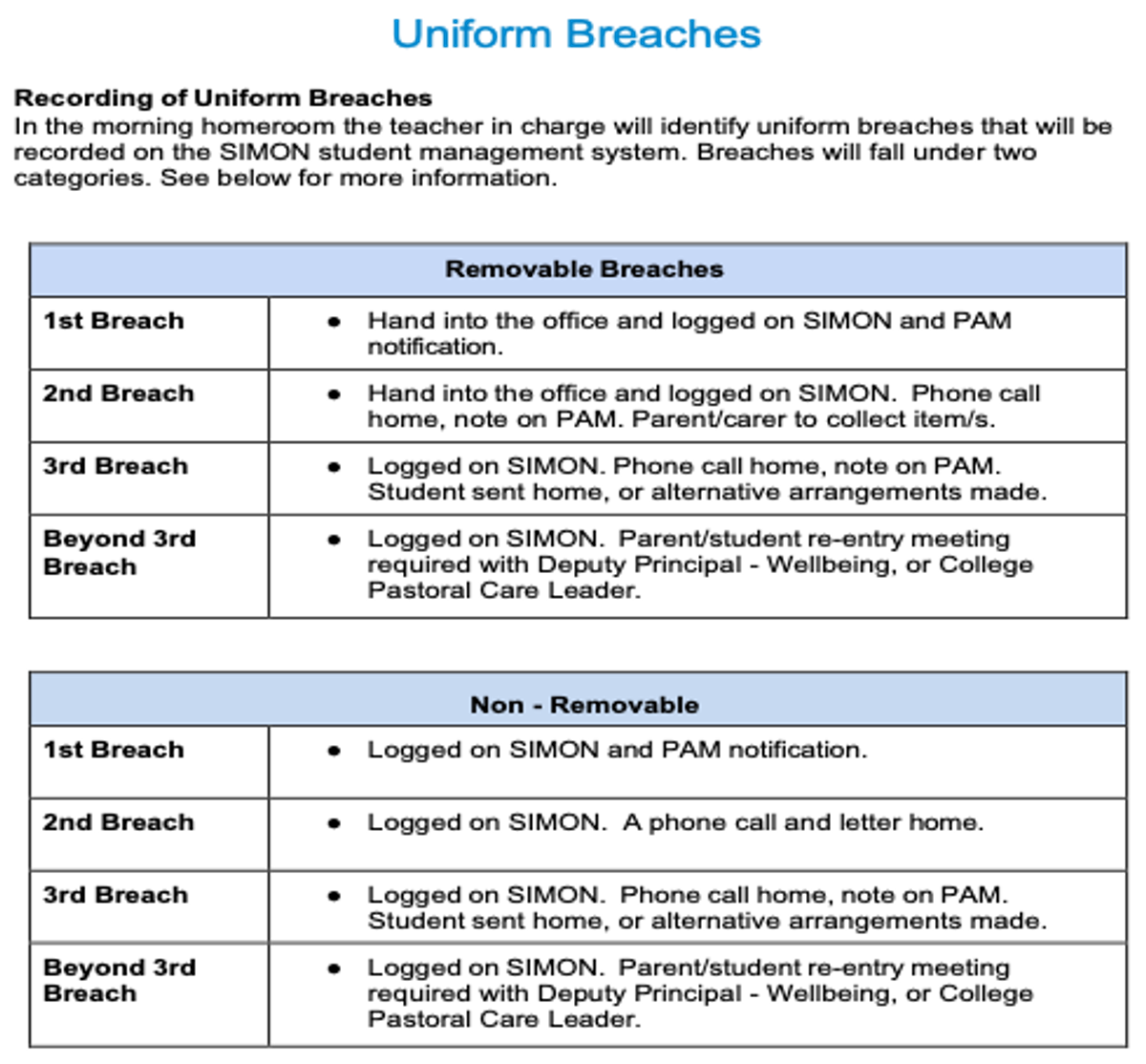Wellbeing
Mr. John Ryan - Deputy Principal

Wellbeing
Mr. John Ryan - Deputy Principal
Dear Parents/Guardians
All schools are required to comply with the eleven Child Safe Standards. Each of the Standards is expressed as a statement of an expected outcome that organisations must achieve. The Standards also include minimum requirements, to provide more clarity for your organisation about what you need to do. The MMCRC Anti-Bullying and Bullying Prevention Policy helps our College maintain safe environment for students. It allows us to respond to a specific level of distress caused by bullying. In particular the definitions within the policy enable Child safe conversations to be implemented by our staff with students. See these definitions below.
DEFINITIONS
Bullying is repeated, unreasonable behaviour directed towards a person, causing fear, distress or harm that involves an imbalance of power. It creates a risk to the mental and physical health and safety of others. It occurs when an individual or a group deliberately upsets or hurts another person, their property, reputation or social acceptance on more than one occasion.
Cyberbullying: the ongoing abuse of power to threaten or harm another person using technology. Cyberbullying can occur in chat rooms, on social networking sites, through emails or on mobile phones and includes abusive texts and emails, hurtful messages, images or videos, imitating others, excluding others, humiliating others, spreading nasty gossip and chat, and creating fake accounts to trick someone or humiliate them.
Direct bullying: behaviour that hurts, harms, or humiliates and is overt, obvious, and apparent to anyone witnessing it. The actions and words are easy to identify, the identity of the person bullying is usually known, and the acts are focused toward the person being bullied – they know about the bullying as it is happening.
Exclusion bullying: deliberately and continuously being left out of activities.
Extortion bullying: Physically stronger and more powerful students may bully other students into giving up their possessions, buying food and drink, or participating in rule-breaking activities.
Gesture bullying: non-verbal signals used to silence and intimidate a victim. Indirect bullying: behaviour that hurts, harms, or humiliates, which is often covert, subtle, and not always immediately acknowledged as bullying. The words and actions can be harder to identify, as they can be done anonymously and discreetly, and the target might not find out about the bullying until long after it has occurred.
Physical bullying: pushing, shoving, fighting, pinching, damaging, stealing or hiding personal belongings and any other unwelcome physical contact used intentionally to intimidate or hurt someone.
Psychological bullying: words or actions are used to cause psychological harm. Examples of psychological bullying include name-calling, teasing or making fun of someone because of their actions, appearance, physical characteristics or cultural background.
Harassment: when a person is treated less favourably based on certain protected attributes, such as race, religion, sex, age, disability, medical conditions, sexuality, gender identity or intersex status. Treating a person less favourably can include harassing or bullying a person. Sexual harassment: touching, sexually orientated jokes, drawings of, or writing about someone’s body, using rude names or commenting about someone’s morals, unwanted invitations of a sexual nature, continuously asking questions about someone’s private life.
Verbal bullying: put downs, particularly those referring to physical characteristics, can result in loss of self-esteem. Racial discrimination or any kind of discrimination based on age, sex, gender, disability, belief or culture is a form of bullying. Visual bullying: offensive notes or material, graffiti, or damaging other people’s possessions.
What bullying is not: many distressing behaviours are not examples of bullying, even though they are unpleasant and often require teacher intervention and management. Three socially unpleasant situations are often confused with bullying:
Mutual conflict: In mutual conflict situations, there is an argument or disagreement between students but not an imbalance of power. Unresolved mutual conflict sometimes develops into a bullying situation, with one person becoming targeted repeatedly for ‘retaliation’ in a one-sided way.
Social rejection or dislike: Social rejection is bullying when someone feels alone or left out because of the manipulation of their peer relationships and social status. It is not bullying when, say, people make new friends and distance themselves from old friends. That old friend may feel as though they are being “socially excluded” but if there is no aggressive intention to cause harm, they are not being bullied.
Single-episode acts: Single episodes of nastiness or physical aggression are not the same as bullying. If a student is verbally abused or pushed on one occasion, they are not being bullied. Nastiness or physical aggression that is directed towards many different students is not the same as bullying.
Uniform Guidelines Implementation
As discussed in the previous, the updated MMCRC Uniform Guidelines came into effect, Tuesday, June 10. Once again, I implore parents to read the guidelines and discuss these with your child at home. In particular, read the Three Breach system that will be applied, if students fail to wear the correct uniform. The breach system considers both removable and non-removable items. Parent pick-up of removable items applies on the second breach and more serious sanctions apply on the third breach.

